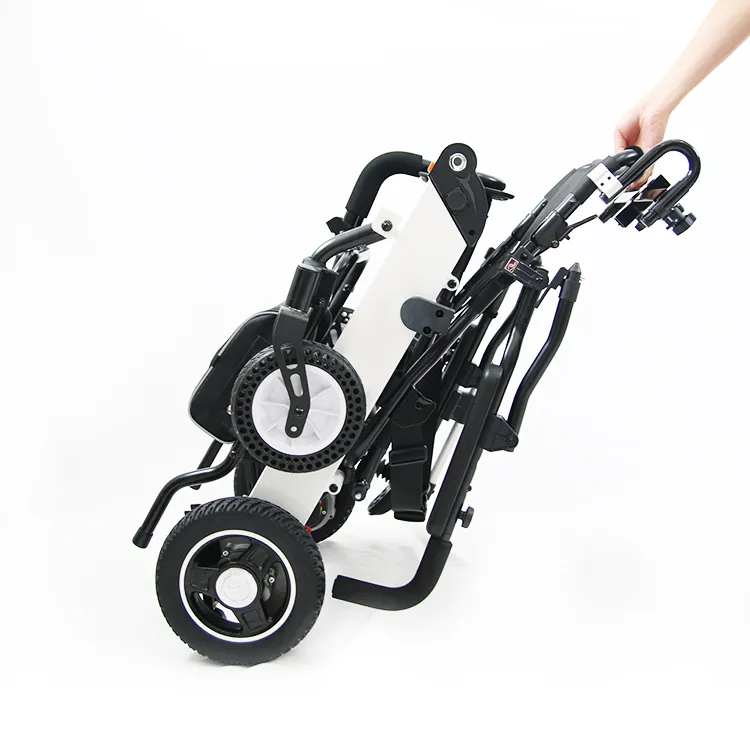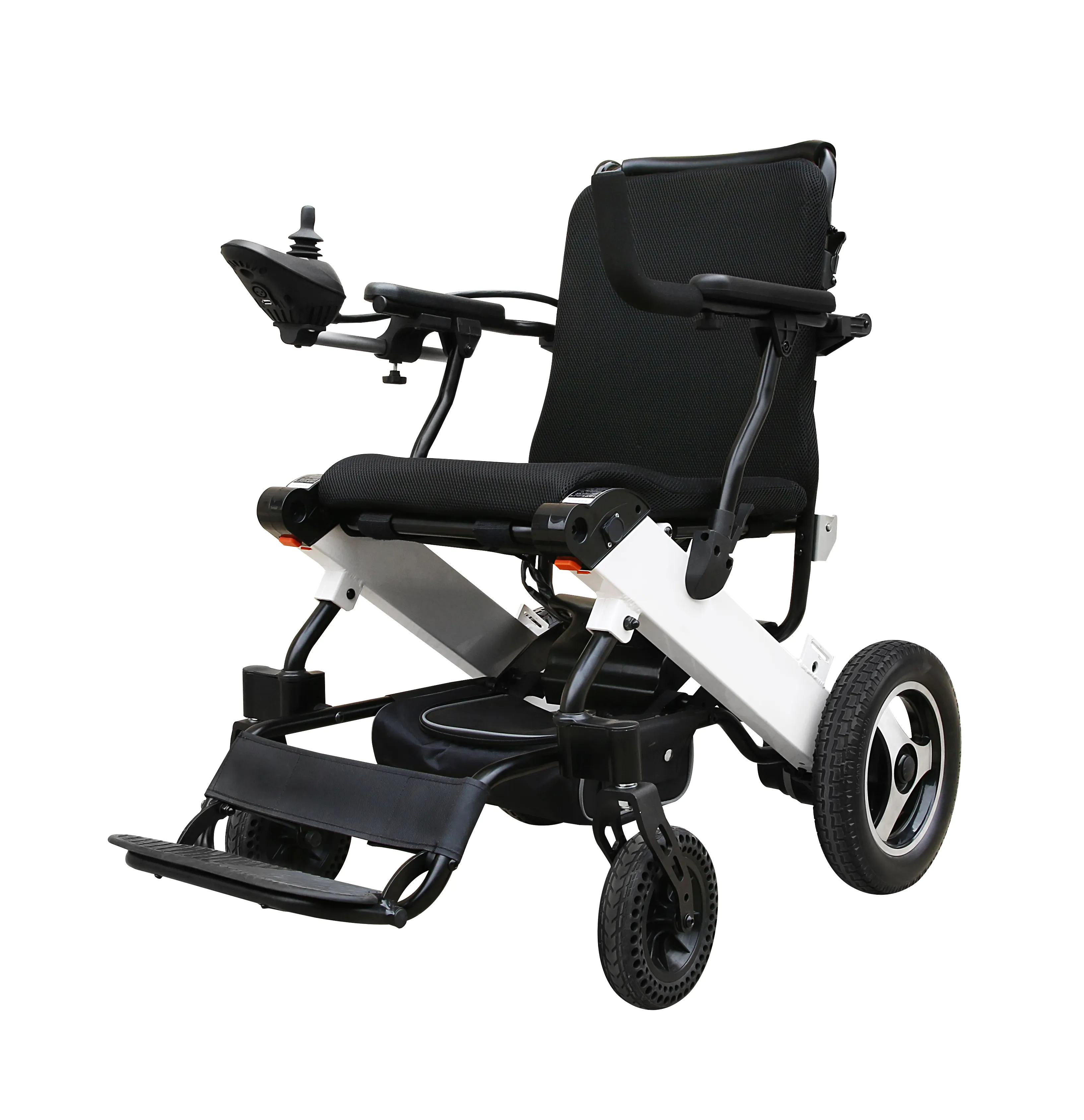In recent years, home electric wheelchairs have become an indispensable means of transportation for many people with limited mobility. They are particularly popular in settings such as home care, rehabilitation support, and retirement communities, thanks to their hands-free, lightweight, and flexible design.
However, a core question has sparked widespread discussion: "Can a home electric wheelchair be overcharged?"
Many users have expressed concerns: "Will plugging in the wheelchair before bed and unplugging it in the morning damage the battery?" "Will the wheelchair battery, like a mobile phone, continue to charge after it's fully charged, shorten its lifespan or even cause a fire?" "Is it safe to leave it plugged in for extended periods?" These questions have been frequently raised on social media and user forums.
What is a "home electric wheelchair"?
A "home electric wheelchair" refers to a battery-powered wheelchair primarily used in the home, requiring no manual propulsion and operated via a joystick or controller. Compared to professional nursing wheelchairs used in hospitals, home electric wheelchairs prioritize convenience, foldability, and user autonomy, making them suitable for daily travel and indoor activities.
Its core components include:
· Electric drive wheel system (motor)
· Control module (controller, electronic control board)
· Power battery system (typically lead-acid or lithium batteries)
· Charging device (external or internal charger)
A home electric wheelchair's battery system and charger are key to assessing whether it poses an overcharging risk.

——What is "overcharging"?
——Can it happen in a home electric wheelchair?
Overcharging occurs when a battery continues to receive current after reaching its maximum charge capacity, leading to internal temperature rise, electrolyte decomposition, performance degradation, and even the risk of swelling, short circuits, or fire.
Whether overcharging can occur in a home electric wheelchair requires analysis from the following perspectives:
✅ 1. Battery type determines overcharging risk
The main battery types currently used in home electric wheelchairs include:
· Sealed lead-acid (SLA): Commonly used in earlier generations, it offers low cost but is heavy.
· Lithium-ion (Li-ion): Increasingly used in modern models, it offers high energy density, long life, and a lightweight design.
· Lithium Iron Phosphate (LiFePO₄): A new generation of high-safety batteries with improved thermal stability.
Different batteries have different "overcharge tolerance" and "overcharge management mechanisms":
Battery Type | Is it prone to overcharging? | Is a protection board required? | Market prevalence |
1. Lead-acid battery | Relatively less sensitive | Generally, a protection board is not included, but the battery has an automatic charge/stop function | Used in lower-end models |
| 2. Lithium battery | Prone to overcharging | A battery management system (BMS) is required | Mid- to high-end mainstream configurations |
| 3. Lithium iron phosphate | Safer | A protection board is still required to prevent excessive temperature rise | Used in high-end wheelchairs |
In short: If a home electric wheelchair battery is properly designed and equipped with a protection system, the risk of overcharging can be completely avoided.
✅ 2. Does the charger have intelligent identification capabilities?
Most smart chargers provided by reputable manufacturers for home electric wheelchairs have the following functions:
· Detect voltage and current changes
· Automatically stop output when fully charged
· Maintain trickle current to maintain voltage
· Overtemperature protection, short-circuit protection, etc.
For example, a common 36V/2A charger will automatically switch from "charging" mode to "constant voltage trickle current" or "standby" mode once the wheelchair battery is fully charged, thus preventing overcharging.
✅ Dayang Medical Opinion: "A legitimate electric wheelchair product will not overcharge due to prolonged use, unless an incompatible charger is used or the battery is aged and deteriorating."

Why are home electric wheelchairs "misunderstood" as prone to overcharging?
Although electric wheelchair batteries theoretically have self-protection systems, in practice, some misconceptions and mishandling can still cause users to worry about overcharging:
Myth 1: Overnight charging equals "overcharging"
In fact, many manufacturers clearly state in their manuals: "The recommended charging time is 6-8 hours, and it can be safely charged overnight." This is based on the fact that smart chargers automatically shut down or enter maintenance mode when fully charged.
Myth 2: Battery heating indicates "overcharging"
It is normal for lithium batteries to generate heat during charging, but high temperatures (>60°C) may indicate battery aging or an internal short circuit, not pure overcharging.
Myth 3: Failure to match voltage/current specifications when replacing batteries or chargers
Some users unauthorizedly replace non-original lithium batteries or chargers, causing the BMS protection mechanism to fail and leading to a real risk of overcharging. This is particularly common with "assembled wheelchairs."
How can I avoid the "overcharging misconception" with home electric wheelchairs?
Although overcharging is extremely rare with legitimate products, safe use still requires careful consideration:
1. Use the original charger
Always use the charger provided by the manufacturer. The charging voltage and current must match the battery; do not use a universal charger for convenience.
2. Avoid charging in direct sunlight or high temperatures
Excessive ambient temperature may exacerbate battery chemical reactions and increase the risk of thermal runaway.
3. Check the battery status regularly
If you notice a sudden drop in battery life, bulging batteries, or overheating, stop using the wheelchair immediately and contact a repair technician.
4. Understand the meaning of the charging indicator lights
Different charger colors indicate different statuses (red for charging, green for completion). Users should be familiar with these indicators.
Special Note: The difference in lifespan between lithium and lead-acid batteries
Another concern about overcharging is: "Will it affect battery life?"
Battery Type | Are you worried about overcharging? | Charging cycle life | Recommended users |
| 1. Lead-acid battery | Slight overcharging has minimal impact, but can lead to sulfation | Approximately 300-500 times | Price-sensitive users |
| 2. Lithium battery | It's also safe to overcharge (but has a protective plate) | Approximately 800-1500 times | Mainstream users |
| 3. Lithium iron phosphate | It's the safest option, with a lifespan of over 2,000 cycles | Over 2000 times | High-end electric wheelchair users |
It is clear that long-term use of non-intelligent charging methods or improper battery replacement in home electric wheelchairs can indeed affect battery life.
Are wheelchair battery fires actually caused by "overcharging"?
A local report reported an incident of a home electric wheelchair smoking while charging. An investigation revealed that the user had connected an older 48V lead-acid wheelchair battery to a 36V lithium-ion charger. The voltage mismatch caused internal electrolyte gassing and expansion, ultimately resulting in smoke.
This was not a typical case of "overcharging," but rather an "abnormal chemical reaction caused by improper charging practices." Therefore, when assessing whether a home electric wheelchair poses an overcharging risk, it is important to distinguish between a device design flaw and user error.

Home electric wheelchairs won't automatically "overcharge"
In summary, the professional answer to the question, "Can home electric wheelchairs be overcharged?" is:
✅ In theory, no!
In products from reputable manufacturers, the battery system (lithium or lead-acid) is equipped with a complete BMS (battery management system) and, when used with a smart charger, effectively prevents overcharging.
⚠️ However, users must use it in a standardized manner!
Unauthorized modifications, changes in battery type, use of an incompatible charger, or neglect of the charging environment can lead to overcharging or battery safety incidents.
Battery safety and service life depend not only on device design but also on each user's understanding of device principles and proper operation.
Do you support OEM/ODM branding for electric wheelchairs?
Yes, we offer full OEM/ODM solutions. With over 15 years of experience, our R&D teams based in the Greater Bay Area specialize in tailoring electric wheelchairs to your design, color, features, or branding requirements. Certified by ISO9001, ISO13485, FDA, TUV, and CE, our Foshan factory supports volume production.
Benefit from factory-direct quotes, competitive prices, wholesale discounts, and quality assurance for custom wheelchairs ready for global sales and distribution.










